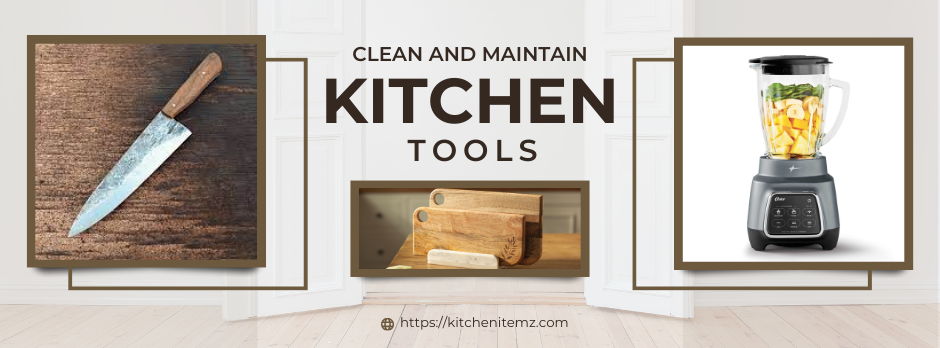
Kitchen Tools: A Guide to Cleaning and Maintaining Your Kitchen
Kitchen tools are various instruments or utensils used in a kitchen for preparing, cooking, and serving food. These tools are important for various tasks, such as chopping, slicing, mixing, measuring, and more. Kitchen tools can include items like knives, Knife Sharpener, Juicer, Blender, Vegetable Chopper, Cutting Boards, Measuring Cups and Spoons, Pots and Pans, Spatulas, Whisks, Can Openers, Apple Slicer, Peelers, Graters, Gas Stove, Induction Cooker and more. The specific tools you need in your kitchen depend on the type of cooking and food preparation you do, but they all serve the purpose of making cooking and food preparation more efficient and effective.
Cleaning and maintaining your kitchen tools are essential for ensuring they remain safe to use and perform at their best. But question now,
How to Clean and Maintain Your Kitchen Tools?
Here are some guidelines for cleaning and maintaining these kitchen tools:
Cleaning Your Kitchen Knife
Hand Washing: Always wash your kitchen knives by hand rather than using a dishwasher. Harsh detergents and high heat in the dishwashers can damage the blade and handle.
Use Mild Detergent: Use a mild dishwashing soap and warm water to clean the knife. Avoid abrasive scouring pads or harsh chemicals that can scratch the blade.
Be Cautious: Be mindful of the sharp blade while washing. Hold the knife by the handle and wash the blade carefully, moving from the spine to the edge.
Avoid Soaking: Avoid soaking or submerging your knife in water for extended periods. This may damage the handle.
Dry Immediately: After washing the knife, wipe it with a clean, dry towel and dry it thoroughly. Moisture can cause the blade to rust, and it’s also a safety hazard.
Store Properly: Store your knives in a knife block, magnetic strip, or blade guard to protect the blade or avoid accidents.
Honing and Sharpening: Need to hone knife with a honing rod to maintain its edge. Depending on use, you may need to sharpen it professionally. Or sharpen it with a sharpening stone occasionally.
Cleaning Your Juicer
Unplug and Disassemble: Before cleaning your juicer, unplug it and disassemble all removable parts, including the juice container, pulp container, and any attachments.
Rinse Immediately: After juicing, rinse the removable parts with warm, soapy water to prevent the buildup of residue and pulp. Use a soft brush or sponge to remove any stubborn residue.
Soak for Stubborn Stains: If any areas have stubborn stains or dried-on pulp, soak them in warm, soapy water for a few minutes before scrubbing again.
Check the Manual: Following the juicer’s user manual for detailed cleaning instructions is essential. Some juicers may have parts that are dishwasher-safe, while others may require hand washing.
Clean the Motor/Base Carefully: Use a damp cloth to wipe down the motor/base of the juicer. Avoid getting it wet, as it may damage the electrical components.
Dry Thoroughly: After cleaning, make sure all the parts are thoroughly dry before reassembling or storing them to prevent mold growth and odors.
Regular Maintenance: Depending on the juicer type, you may need to replace certain parts like filters or blades over time. Follow the manufacturer’s commendations for maintenance and replacement parts.
Lubricate as Needed: Many juicers have moving parts that may require occasional lubrication. Refer to the manual for guidance on lubrication if necessary.
According to the guidelines, you can ensure that your kitchen knife and juicer stay in good condition, work optimally, and last long. Regular cleaning and maintenance of these kitchen appliances is vital for their quality and safety.


